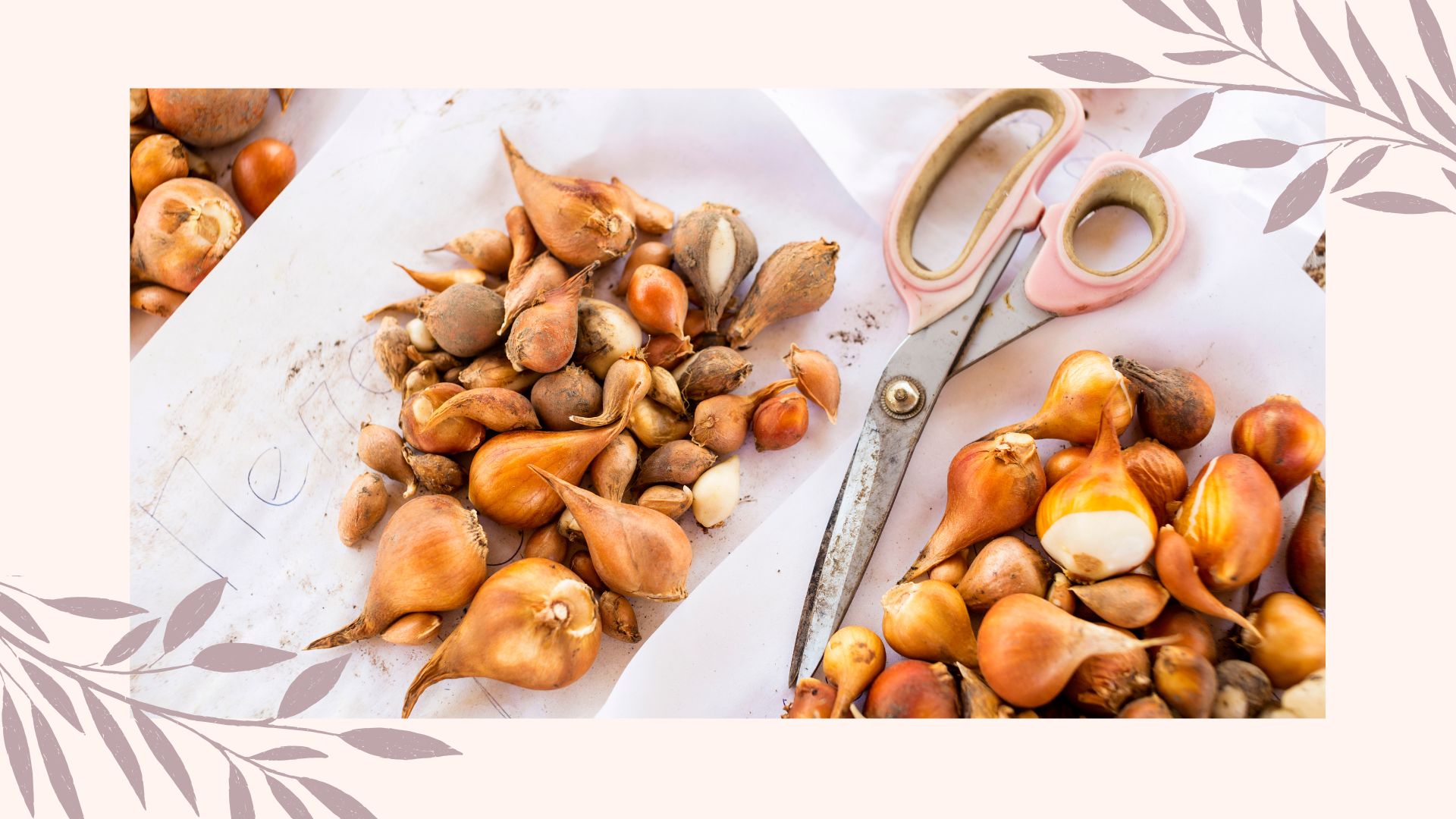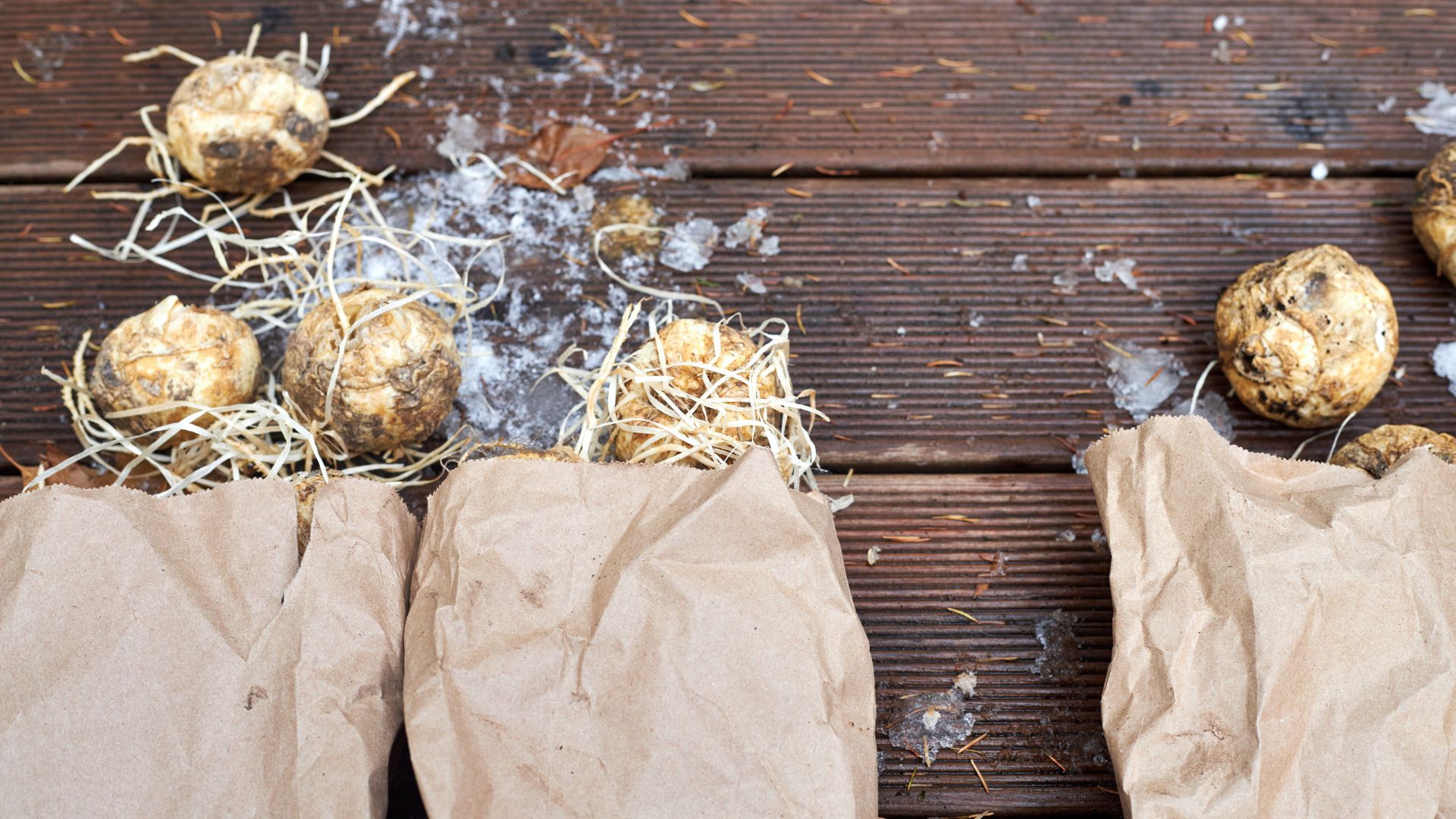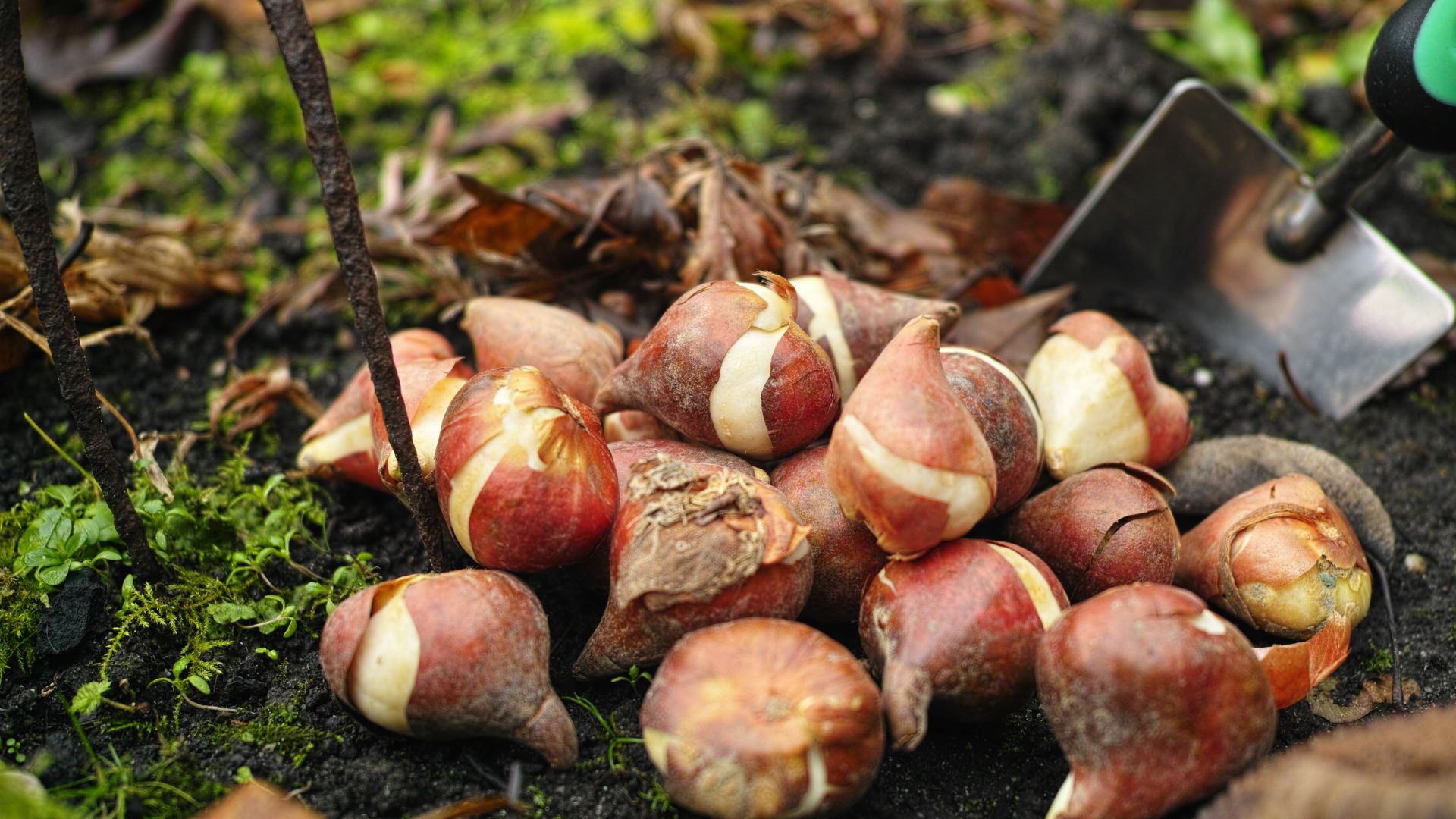
Although it's sad to see the last of the spring blooms wilt away, it means that it's the perfect time to prepare the perennial bulbs for next year.
If you're looking for ways to reduce costs in the garden, digging up your spring bulbs and storing them over winter is a fantastic way to do it. Perennials like tulips and daffodils can naturally die back and regrow again a year later, but you'll need to help them along.
So, if you want to transform your garden on a budget next spring, follow our expert-led guide to safely storing spring bulbs.
How to store spring bulbs safely ready for next year: an expert guide
Whether it's succession planting or collecting seeds from your already established plants, there are so many great ways to get more out of your garden without spending a penny.
Learning how to store and care for your spring bulbs is just another example of this. And a pretty simple one at that!
Petar Ivanov, professional gardener at Fantastic Gardeners, explains the method, "To store spring bulbs properly, the key is keeping them dry, cool, and well-ventilated to prevent rot and premature sprouting."
Before you begin taking bulbs out, make sure all the foliage on the plants has completely died back, as this proves they've stored enough energy for next season.

"Start by gently lifting the bulbs out of the ground and gently cleaning off the soil. But don’t wash them. Then, allow them to dry in a shaded, airy spot for a few days to 1 week," explains Petar. "Once they're dry, inspect the bulbs for damage or disease, discarding any soft or mouldy ones."
Make sure not to add any mouldy or rotten bulbs to your homemade compost heap, as they could be harbouring nasty diseases that can spread to other plants in your plot.
Petar recommends storing the bulbs in paper bags, mesh bags or even shallow boxes layered with sawdust, peat-free compost or vermiculite.
"Avoid plastic bags or airtight containers because a lack of airflow can lead to fungal problems. Proper storage guarantees bulbs remain dormant and viable for replanting next season," he warns.
What you'll need

RRP: £13.99 | This trowel is ideal for digging up bulbs in the ground and is comfortable to use thanks to its wooden handle.

RRP: £6.25 | These are ideal for storing your bulbs overwinter. They're affordable and come with more than enough bags to hold all your spring bulbs safely.

RRP: £12.71 | These Gold Leaf RHS collections Chelsea Ladies Comfortable Leather Gardening Gloves are perfect for any job you need to tackle in your garden, especially the mucky task of lifting bulbs.
Where should you store spring bulbs?
Now the matter is where to store the bulbs to ensure they stay intact and not damaged. When it's time to plant spring bulbs next year, you don't want to be met with bags of rotten plant matter.
"A closet, basement, garage, or shed is a great place to store bulbs. The necessary temperature range between 4-15°C is ideal for avoiding freezing and extreme heat," suggests Jane Dobbs, Lead Gardener at Allan's Gardeners.
She goes on to explain that it's okay to store some bulbs in your fridge's vegetable drawer. However, be careful what you store them with, as fruits like apples and pears emit ethylene gas, which will damage the bulbs.
Should you not want to sacrifice your favourite fruits, then it may be time to declutter your shed so your bulbs have a home over winter.
FAQs
Can you store bulbs for more than a year?
You might be wondering just how long you can hold onto your bulbs before they lose their stored energy. Unfortunately, you'll have to plant your tulips way before the year marker if you want them to bloom properly.
"Technically, yes, you can store bulbs for more than a year, but it's not recommended in most cases. The longer bulbs are out of the ground, the greater the chance their viability will drop," states Petar.
The bulbs will love their moisture and energy reserves as time passes, which won't just minimise their blooming but also prevent them from sprouting altogether.

"If you must store them for longer than a year, make sure they’re kept in optimal conditions. Still, even under ideal storage, germination rates and bloom quality typically decline after the first year," adds Petar.
For the very best results, he recommends planting the bulbs the very next season after lifting them.
When should you dig up spring bulbs?
When you start to sort the garden out before the summer arrives, you'll usually see that your spring flowers have begun to die back. This is a good sign, it's time to start storing.
"You should dig up spring bulbs once the foliage has completely yellowed and died back, which is usually 6 to 8 weeks after blooming. The dying leaves are still photosynthesising and transferring nutrients back into the bulb, helping it store energy for next year’s growth," says Petar.
He warns that removing the bulbs too early can weaken them, meaning next year's flowering will be reduced. Petar also reiterates that a gentle hand is needed when lifting the bulbs, as damage to them can also affect their ability to grow next year.
"If the bulbs are naturalising well in the ground and not overcrowded, you don’t need to lift them every year, but lifting and dividing every few years helps keep them vigorous and flowering well," he adds.
Once your spring bulbs are safely stored, you'll still have those late summer flowers and summer bulbs to enjoy into autumn.







